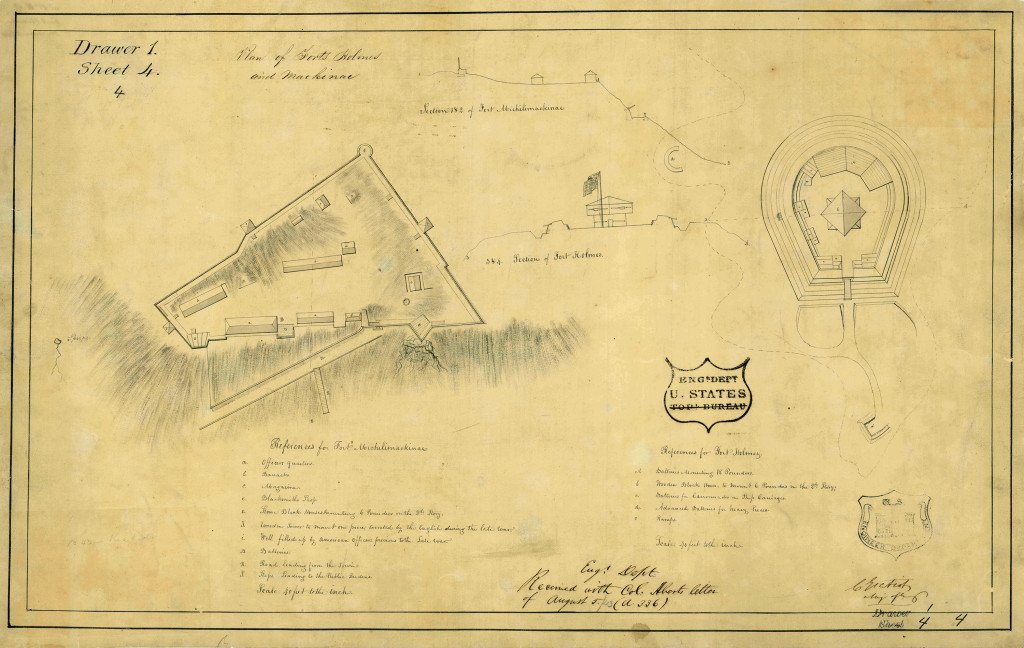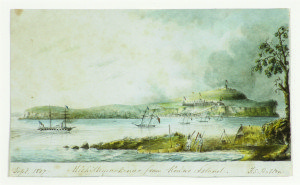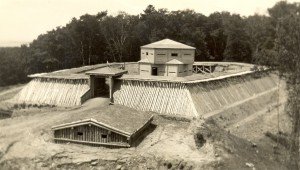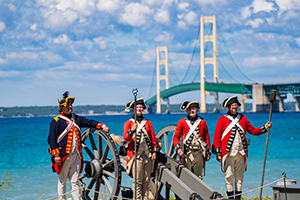
When American troops returned to Mackinac Island following the War of 1812, they inherited a new piece of defensive architecture from their former British enemies. In addition to Fort Mackinac, the Americans also acquired a small fort on the island’s highest point when they arrived in 1815. Although the British originally named the post Fort George, the Americans quickly renamed the fort to honor Major Andrew Holmes, who had been killed in battle on the island in 1814. For the next few years, Fort Holmes played an important part in the daily routines and duties of the American soldiers stationed on Mackinac Island.

As it protected the vulnerable northern flank of Fort Mackinac, Fort Holmes became an important part of the American defenses on Mackinac Island. Beginning soon after the Americans arrived in the summer of 1815, a guard detachment of 10 men marched up to Fort Holmes every morning. While one man stood guard, the other soldiers relaxed in the fort’s blockhouse until their turn at the sentry post. The Fort Holmes garrison grew in 1816, when a “Piquet Guard” joined the regular sentries on a nightly basis. Initially consisting of an officer, a sergeant, a corporal, and 20 privates, the Piquet Guard was to man Fort Holmes’ defenses in the event of an emergency. In the event of an attack, solders at Fort Holmes were to fire a cannon to warn the garrison of Fort Mackinac, then fend off the invading force with their muskets and Fort Holmes’ artillery pieces until reinforcements arrived. Members of the Piquet Guard were, however, excused from the 24-hour sentry duties and could thus enjoy a full night’s sleep in the blockhouse before returning to Fort Mackinac in the morning. The regular guard detachment continued to provide around the clock security.

Every autumn, the guards of Fort Holmes had an additional duty: closing the post for the winter. With Mackinac Island locked in ice and snow, there was little fear of attack. Soldiers closed Fort Holmes for the last time in December 1817, and never reopened it. After removing the fort’s artillery and other equipment, the Americans allowed the fort to fall into ruin. Today, 200 years after it was constructed by the British and manned by the Americans, Fort Holmes is rising again. Visitors to the island in 2015 will find that the fort is being reconstructed by Mackinac State Historic Parks.









